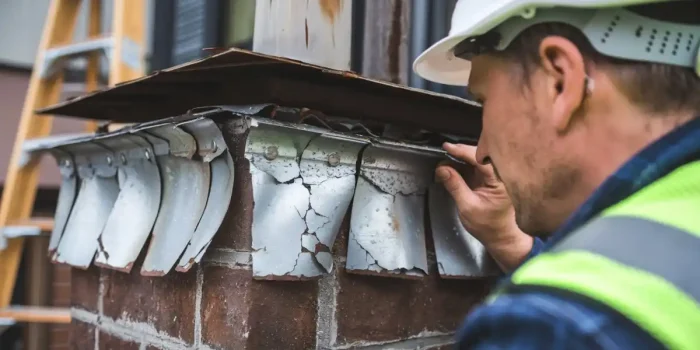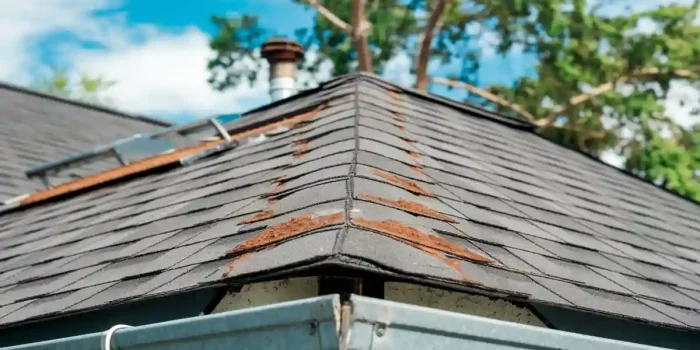Metal Flashing Problems: Common Issues and Solutions
When you look at your flat roof, you might not give much thought to those thin strips of metal wrapped around edges, joints, and penetrations. However, these seemingly simple components – known as metal flashing – play a crucial role in keeping your Houston property dry and protected. Without properly functioning flashing, even the most expensive roofing system can fail catastrophically.
As experienced roofing professionals who’ve seen countless properties across Houston, we understand that metal flashing problems are among the most common yet overlooked issues property owners face. These problems don’t just appear overnight; instead, they develop gradually, often going unnoticed until significant damage has already occurred.
Metal flashing serves as your roof’s first line of defense against water infiltration. Consequently, when flashing fails, the results can be devastating for both residential and commercial properties. Understanding these issues before they escalate can save you thousands of dollars in repair costs and protect your investment for years to come.
What Is Metal Flashing and Why Does It Matter?
Before diving into specific problems, let’s establish what metal flashing actually does for your roofing system. Essentially, flashing acts as a waterproof barrier installed at critical junction points where water is most likely to penetrate your roof structure.
These metal strips redirect water away from vulnerable areas such as chimneys, vents, skylights, and wall intersections. Furthermore, flashing creates a seamless transition between different roofing materials, ensuring that water flows properly off your roof rather than seeping into gaps and cracks.
In Houston’s challenging climate, where intense heat, sudden storms, and high humidity are common, metal flashing works overtime to protect your property. Therefore, understanding how flashing can fail helps you take proactive measures to prevent expensive damage.
Common Metal Flashing Problems Houston Property Owners Face
Property owners throughout the Houston area encounter various flashing-related issues that can compromise their roofing systems. These problems often develop slowly over time, making them particularly dangerous because they frequently go undetected until significant damage has already occurred. Understanding these common issues helps you recognize warning signs early and take appropriate action to protect your investment.
The harsh Texas climate, combined with Houston’s unique environmental challenges, creates perfect conditions for flashing deterioration. From the intense summer heat that can exceed 100°F to sudden temperature drops during winter months, your metal flashing endures constant stress that gradually weakens its protective capabilities.
Corrosion and Rust Formation
Houston’s humid subtropical climate creates perfect conditions for metal corrosion. Over time, moisture exposure causes metal flashing to develop rust spots, which gradually weaken the material’s structural integrity. Initially, these rust spots might seem insignificant, but they eventually create holes that allow water to penetrate your roofing system.
Moreover, the combination of saltwater air (especially near the Gulf Coast) and industrial pollutants accelerates the corrosion process. Galvanized steel flashing, while affordable, is particularly susceptible to rust in Houston’s environment. Consequently, many property owners find themselves dealing with premature flashing failure.
Improper Installation Issues
Unfortunately, improper installation represents one of the most common causes of flashing problems. When contractors rush through installations or lack proper training, they often create gaps, use insufficient overlap, or fail to secure flashing properly to the roof structure.
Additionally, using incorrect fasteners or placement techniques can compromise the entire flashing system. For instance, exposed fasteners create potential leak points, while inadequate sealing allows wind-driven rain to penetrate behind the flashing material.
Thermal Expansion and Contraction
Houston’s extreme temperature fluctuations put significant stress on metal flashing systems. During scorching summer days, temperatures can exceed 100°F, causing metal to expand considerably. Then, during winter months or sudden weather changes, rapid contraction occurs.
This constant expansion and contraction cycle gradually loosens fasteners, creates gaps in joints, and can even cause flashing to crack or split. Subsequently, these thermal stress points become prime locations for water infiltration and structural damage.
Advanced Metal Flashing Problems and Their Consequences
Beyond the basic issues that most property owners recognize, several advanced flashing problems can develop that require professional expertise to identify and resolve. These complex issues often result from multiple contributing factors working together to compromise your roofing system’s integrity.
Professional contractors with years of experience can spot these advanced problems during routine inspections, often preventing catastrophic failures that could cost thousands of dollars in emergency repairs. Understanding these more complex issues helps you appreciate why professional maintenance and inspection services provide such valuable protection for your property.

Wind Damage and Uplift
Houston’s severe weather patterns, including hurricanes and strong thunderstorms, create substantial wind uplift forces on roofing systems.
When flashing isn’t properly secured or has become loose due to other factors, high winds can tear it away from the roof structure entirely.
Even minor wind damage to flashing can have cascading effects throughout your roofing system. Once flashing becomes compromised, subsequent storms can cause progressively worse damage, eventually leading to complete system failure.
Sealant Deterioration
Most flashing installations rely on sealants to create watertight seals around penetrations and joints. However, sealants have limited lifespans and gradually deteriorate under constant UV exposure, temperature fluctuations, and weather stress.
As sealants crack, shrink, or lose adhesion, they create pathways for water infiltration. Unfortunately, many property owners don’t realize their sealants have failed until visible water damage appears inside their buildings.
Age-Related Degradation
Like all building materials, metal flashing has a finite lifespan that varies depending on material type, installation quality, and environmental conditions. In Houston’s harsh climate, even high-quality flashing materials may show signs of degradation within 15-20 years.
Aging flashing becomes increasingly brittle, making it more susceptible to cracking under thermal stress or impact damage. Therefore, older properties require more frequent flashing inspections and proactive replacement planning.
Professional Solutions for Metal Flashing Problems
Addressing metal flashing problems effectively requires more than just identifying the issues – it demands comprehensive solutions that address both immediate problems and underlying causes. Professional contractors bring specialized knowledge, proper tools, and high-quality materials that ensure long-lasting repairs and optimal performance.
The key to successful flashing repairs lies in understanding that each property presents unique challenges based on its age, construction methods, environmental exposure, and previous maintenance history. Professional solutions take all these factors into account to provide customized approaches that deliver superior results.

Material Selection and Upgrades
Choosing appropriate flashing materials significantly impacts long-term performance in Houston’s climate. While galvanized steel offers initial cost savings, premium materials like aluminum, copper, or stainless steel provide superior corrosion resistance and longevity.
Furthermore, modern synthetic flashing materials and rubberized membranes offer excellent flexibility and weather resistance.
These advanced materials better accommodate thermal movement while maintaining watertight seals over extended periods.
Proper Installation Techniques
Professional installation techniques make the difference between flashing that lasts decades and systems that fail prematurely. Experienced contractors understand the importance of proper overlap, adequate fastening, and strategic placement to ensure optimal performance.
Additionally, professionals use compatible materials and fasteners that won’t create galvanic corrosion problems. They also understand local building codes and manufacturer specifications that govern proper flashing installation.
Comprehensive Maintenance Programs
Regular maintenance represents the most cost-effective approach to preventing major flashing problems. Professional maintenance programs include detailed inspections, minor repairs, sealant replacement, and preventive measures to extend flashing lifespan.
During maintenance visits, experienced technicians can identify potential problems before they cause significant damage. This proactive approach saves property owners substantial money compared to emergency repairs after failures occur.
When to Call Professional Houston Contractors
Recognizing when DIY repairs are insufficient requires understanding the complexity of modern roofing systems. While minor sealant touch-ups might seem manageable, comprehensive flashing repairs require specialized knowledge, tools, and materials that most property owners don’t possess.
Moreover, improper repairs often create bigger problems than the original issues. When you notice signs of flashing problems such as water stains, rust spots, loose materials, or visible gaps, it’s time to consult experienced professionals who can assess the situation properly.
Professional contractors can also help you get a free flat roof repair estimate to understand the scope and cost of necessary repairs. This assessment helps you make informed decisions about repair versus replacement options while ensuring your property remains protected.
Conclusion
Metal flashing problems might seem minor compared to other roofing issues, but they can quickly escalate into major structural damage if left unaddressed. Understanding common problems, their causes, and appropriate solutions empowers property owners to take proactive measures that protect their investments.
Houston’s challenging climate makes professional expertise particularly valuable for diagnosing and resolving flashing issues effectively. By working with experienced contractors who understand local conditions and proper repair techniques, you ensure that your roofing system continues protecting your property for years to come.
The early intervention costs significantly less than emergency repairs after major failures occur. Therefore, scheduling regular inspections and addressing minor issues promptly represents the smartest approach to flashing maintenance and long-term property protection.
